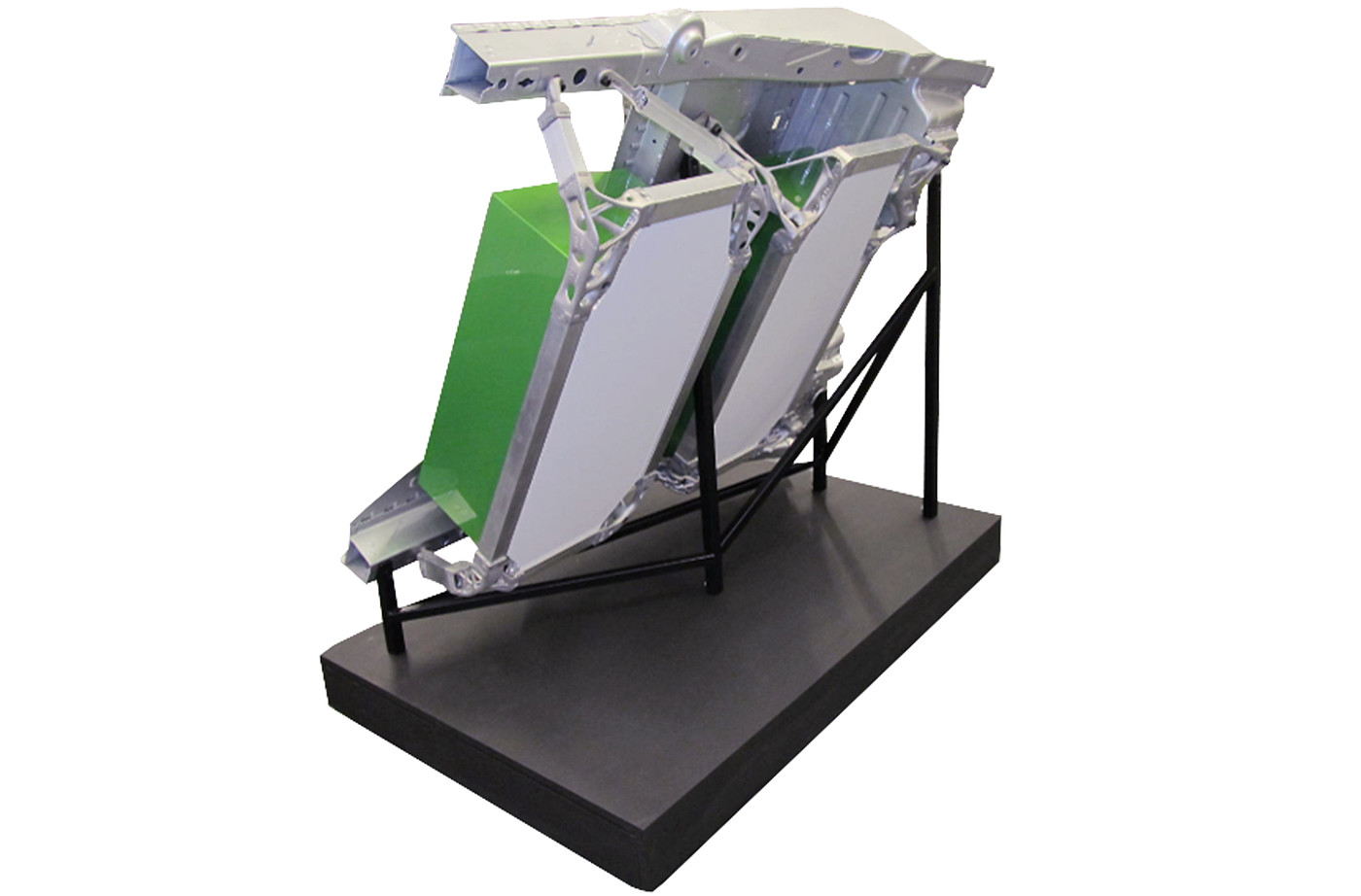
Efficient development and production of multi-variant vehicle body modules
Automotive development is characterised by a large number of high-performance vehicle derivatives. In electric vehicles, the relatively large mass of the traction battery increases the demand for lightweight solutions for body modules.
For this reason, we and four partners have been working on a concept to make the efficient development and production of multi-variant ultra-lightweight body modules possible. Using the example of a battery mount, innovative engineering methods such as topology optimisation, generative design and a joining process not involving a stationary jig were realised to create a fully integrated networked digital process chain.
The advantages of additively and conventionally produced structural elements were combined for efficient production: customisable nodes are additively manufactured and can therefore be procured far more quickly than before; standardised, conventionally produced extruded sections are available on the market at short notice, and require only minimal processing before being joined.
The structure nodes represent systematic lightweight design combined with a high degree of functional integration. The considerable reduction in mass was achieved by means of bionic topology optimisation. Parallel to this, creative workshops were held to develop functional integration concepts that would take advantage of the strengths of additive manufacturing, and so considerably reduce the number of individual parts to be joined.
Generative design software was used to create the basis for the highly efficient production of later component variants. Finally, by consistently networking product and production engineering, an overall digital process chain was created, so if a variant is changed in production, only the data files now need to be "changed" - the time and cost involved in setting up tools and jigs are eliminated. In this way, it proved possible to create a jigless joining process.
The results speak for themselves: figures such as 70% less lead time in the procurement of parts, 60% less mass (here: of a battery mount) and a reduction of 28% in the number of individual parts are bettered only by the cost savings achieved by jigless joining: the elimination of tools and jigs saves 96% of the costs compared to conventional production in sheet metal monocoque design.
Even though the concept under analysis does not yet provide an economic solution for the production of larger quantities, the use of additive design methods has bridged gaps in the digital process chain, and experience has been gained in the efficient design of component variants. However, additive manufacturing costs and cycle times are decreasing continuously - so our concept has time on its side.
In addition to the physical demonstrator, an AR/VR model was also generated, to make the concept's variant diversity an intuitive experience.
The "VariKa" research project was sponsored by the Federal Ministry for Economic Affairs and Energy as part of the "Digital Technologies for the Economy (PAiCE)" programme under the project number 01MA17007A.
Do you want to make your products and development methods fit for the production technologies of the future? With our experience in topology optimisation, generative design and production-oriented design, Richard Kordaß will be happy to offer our support.